
It has been a very busy summer and we have much to report about the Futures Initiative and HASTAC@CUNY–places, people, events, lots of thank yous (we’ll hold those until the end). This will be the first of an informal newsletter we’ll be sending out to let you know what is happening with FI and how you can participate.
This summer we launched the Futures Initiative, a joint project of the Graduate Center and the City University of New York, dedicated to supporting graduate students on their way to becoming the next generation of college professors, researchers, pedagogical innovators, and future institutional leaders and change makers. FI will host workshops, panels, programs, courses, competitive fellowship programs, and, eventually, fellowships for CUNY faculty wanting to co-teach at the Graduate Center and be part of this “learning as teaching, teaching as learning” project dedicated to pedagogy, civic action, and institutional transformation. HASTAC co-founder Cathy N. Davidson moved from Duke University to the Graduate Center to direct this Initiative.
 HASTAC and HASTAC@Duke and HASTAC@CUNY: This summer we divided up the spaces and functions of the central offices of HASTAC (Humanities, Arts, Science, and Technology Alliance and Collaboratory), a 14,000+ open network dedicated to “Changing How We Teach and Learn.” Cathy Davidson has been the principal administrator for the HASTAC network since 2005, when the network and website moved from Stanford to Duke University. She will continue in that role and will also be spearheading the development of a new HASTAC hub, HASTAC@CUNY.
HASTAC administers the MacArthur Foundation Digital Media and Learning Competition, a partnership between Duke University and the University of California Humanities Research Institute which also hosts the DML Research Hub and many other DML projects. HASTAC cofounders Cathy Davidson and David Theo Goldberg are the co-directors of the DML Competition. The Duke portion of the Competition will remain at Duke as will many of the webmaster functions and central network administrative functions. Kaysi Holman is stepping into the role of Program Coordinator of HASTAC@Duke and the PhD Lab in Digital Knowledge at Duke. She will be working with the Lab Scholars and with HASTAC’s webmaster, Demos Orphanides, to populate a Duke-specific hub on hastac.org.
We invite any other institution to create a HASTAC hub. These hubs will both be integrated into the larger HASTAC network and will be the locus of online activity for local organizations, institutions, and networks.
HASTAC@CUNY will be administered by a team of administrative professionals and Futures Initiative Fellows, under director Cathy Davidson. We will also be creating a student and faculty Advisory Board, both within the CUNY system and externally.
HASTAC and HASTAC@Duke and HASTAC@CUNY: This summer we divided up the spaces and functions of the central offices of HASTAC (Humanities, Arts, Science, and Technology Alliance and Collaboratory), a 14,000+ open network dedicated to “Changing How We Teach and Learn.” Cathy Davidson has been the principal administrator for the HASTAC network since 2005, when the network and website moved from Stanford to Duke University. She will continue in that role and will also be spearheading the development of a new HASTAC hub, HASTAC@CUNY.
HASTAC administers the MacArthur Foundation Digital Media and Learning Competition, a partnership between Duke University and the University of California Humanities Research Institute which also hosts the DML Research Hub and many other DML projects. HASTAC cofounders Cathy Davidson and David Theo Goldberg are the co-directors of the DML Competition. The Duke portion of the Competition will remain at Duke as will many of the webmaster functions and central network administrative functions. Kaysi Holman is stepping into the role of Program Coordinator of HASTAC@Duke and the PhD Lab in Digital Knowledge at Duke. She will be working with the Lab Scholars and with HASTAC’s webmaster, Demos Orphanides, to populate a Duke-specific hub on hastac.org.
We invite any other institution to create a HASTAC hub. These hubs will both be integrated into the larger HASTAC network and will be the locus of online activity for local organizations, institutions, and networks.
HASTAC@CUNY will be administered by a team of administrative professionals and Futures Initiative Fellows, under director Cathy Davidson. We will also be creating a student and faculty Advisory Board, both within the CUNY system and externally.
Administrative Team:
Lauren Melendez, Administrative Specialist for the Futures Initiative and HASTAC@CUNY, will be joining the Graduate Center in late September. Lauren previously worked at ESPN Audio in Network Radio within the Sales Planning Department. In this role she coordinated with the Network Sales Team on stewarding General Market, Hispanic, Digital, and Remnant inventory with, pricing, clearing Network Audio buys, and worked with the finance department to expedite credit approvals, billing and several other administrative responsibilities. Lauren has been in the Media Industry for the last seven years and has worked in sales and buying roles at Fox Station Sales, as well as at Initiative Advertising Agency. Lauren is very excited in making the transition from Media into working here at the Graduate Center as an administrative specialist of the Futures Initiative and HASTAC. Lauren is also attending Graduate School at Hunter College in counseling. Lauren feels the admin role here at CUNY will be a great learning experience and growth opportunity, and she is excited by the prospect of working with undergraduate students in the CUNY colleges and community colleges as part of her position at the Futures Initiative. Katina Rogers, Deputy Director of the Futures Initiative and HASTAC@CUNY, will be joining the Graduate Center in October. Katina previously worked with the Modern Language Association as managing editor of MLA Commons, the MLA’s online platform for collaboration, discussion, and new modes of scholarly publishing. She contributed to the MLA’s initiatives on reforming doctoral education, broadening career horizons, and advocating for fair labor practices. Prior to working with the MLA, she conducted research on behalf of the Scholarly Communication Institute on perceptions of career preparedness among humanities scholars working in varied careers. While at SCI, she contributed to the development of the Praxis Network, a multi-institutional and international effort geared toward sharing model programs and experiments in humanities methodological training. Katina is the editor of #Alt-Academy, a digital publication dedicated to exploring the career paths of humanities scholars in and around the academy. She holds a PhD in Comparative Literature from the University of Colorado at Boulder.Futures Fellows:
Michael Dorsch
Michael is a doctoral student specializing in geography in the Earth and Environmental Sciences program at The Graduate Center, CUNY. He teaches in the Department of Geography at Hunter College, CUNY and has also conducted research for the CUNY Institute for Sustainable Cities and the Science and Resilience Institute at Jamaica Bay. His research interests include using tools from geographic information systems and techniques from analytic cartography to visualize social and environmental inequities related to negative environmental exposures from energy production and industrial/post-industrial sites. Michael blogs on issues related to society/environment interactions, and his full CV is available at http://www.earthoutlook.org. Danica is a third-year doctoral student in English at The Graduate Center, CUNY and a teaching fellow at Queens College, CUNY. Her research interests include twentieth century and contemporary literary and cultural studies, American studies, critical university studies, and critical race and gender studies (many, many studies). More specifically, she is interested in how literary, cultural, and popular texts help us understand the experiences of historically underrepresented populations within academia, and how these social texts theorize the relationship between education and social justice. She experiments with images. She dances, cooks, and obsesses over her cat. She is a HASTAC Scholar. Lisa is pursuing a PhD in Comparative Literature at the CUNY Graduate Center. Her current research focuses on late medieval and early renaissance Italian and English literature, and utilizes digital humanities techniques. She also has a background in the computer sciences, having earned an MSc from the University of London. Her thesis explored educational gaming and provided a research context for a Java-based prototype of a multi-platform educational game she developed based on a BBC Radio program. Lisa has a penchant for traditional and antique photography processes, and blogs about education and technology at http://classy-tech.blogspot.com.Kalle is a performance and theatre scholar, currently working on two dissertations, one for Stockholm University in Sweden on the formation of the Swedish brand of drag show. His other dissertation project, for The Graduate Center, CUNY in New York City, concerns male-identified bodies in 20th century burlesque and boylesque. He also co-directs the HASTAC Scholars project for the The Humanities, Arts, Science, and Technology Alliance and Collaboratory (HASTAC). He is on the Board of Directors for The Center for Lesbian and Gay Studies, as well as the board of Swedish Performance Studies-focused publishing house STUTS. He has held fellowships from the American-Scandinavian Foundation and the Swedish Foundation for International Cooperation in Research and Higher Education. His first book, on the Swedish drag group After Dark, was published in 2006. Read his full CV at http://www.westerling.nu.
“Mapping the Universe and Other Small Things: The Quest for Story-Based Exploratory Learning.”
Curtis Wong, Principal Researcher, Microsoft Research
October 3, 10 am
Science Center, Room 4102
Graduate Center, CUNY
Abstract:
This talk deconstructs a number of critically acclaimed interactive media projects across vastly different topics ranging from music, art, astronomy, history, economics, cultural history, physics and data visualization to reveal a common information architecture mapping for compelling and engaging interactive story based exploratory learning.
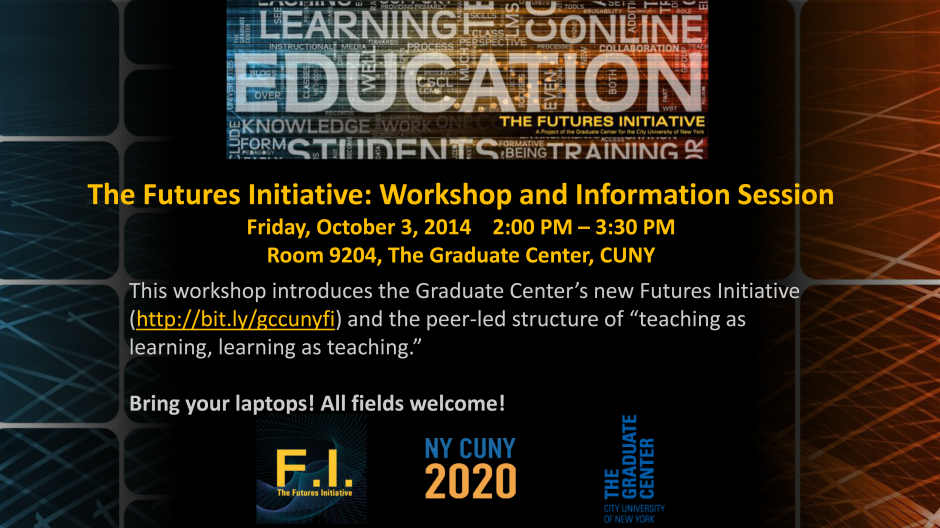 The Futures Initiative: A Workshop and Information Session
The Futures Initiative: A Workshop and Information Session
October 3, 2pm-3:30 pm.
Room 9204
Graduate Center, CUNY
This workshop introduces the Graduate Center’s new Futures Initiative and the peer-led structure of “teaching as learning, learning as teaching.”
Bring your laptops! Workshop participants will work together on a collaborative project that exemplifies the Futures Initiative method.
What Is a Dissertation? New Models, Methods, Media
October 10, 4 pm-5:30 pm EST
Live Streamed, Live Tweeted
Graduate Center, CUNY
ROOM CORRECTION 4406, English Department Lounge
365 Fifth Avenue NY NY
Panelists:
Jade E. Davis, Communications, University of North Carolina
Dwayne Dixon, Cultural Anthropology, Duke University
Gregory T. Donovan, Communication and Media Studies, Fordham University (PhD, Graduate Center, CUNY)
Amanda Licastro, English, Graduate Center, CUNY
Nick Sousanis, Teachers College, Columbia University Virtual Partners:
- Rutgers-Camden Digital Studies Center;
- Studio for New Media at Iowa State University;
- Simpson Center at the University of Washington;
- Maker Lab at the University of Victoria in British Columbia, Canada;
- Sherman Centre for Digital Scholarship at McMaster University in Ontario, Canada;
- Center for Digital Research and Scholarship at Columbia University Libraries.
We will also have virtual participants from Uruguay and Australia.
Voto Latino Innovators Challenge: Applications Accepted Through October 15
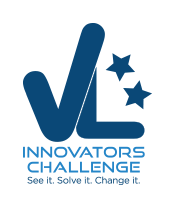 The Voto Latino Innovators Challenge is funding $500,000 worth of tech projects that connect communities, anyone 18-34 can enter.
The Voto Latino Innovators Challenge is funding $500,000 worth of tech projects that connect communities, anyone 18-34 can enter.
The VL Innovators Challenge was created to get Millennials, especially Latino Millennials, thinking about technology both as an innovative change agent and as a potential career.
The VL Innovators Challenge is spearheaded by Voto Latino, a national nonprofit dedicated to empowering Latino Millennials to create positive change in their communities, with support from the John D. and Catherine T. MacArthur Foundation through a grant to the University of California. The grant is administered by HASTAC.
The VL Innovators Challenge supports Connected Learning, a new approach to learning that is designed for the digital age.
Trust Challenge: Now Accepting Higher Ed Applications

The End of Higher Education: A Discussion About Purpose
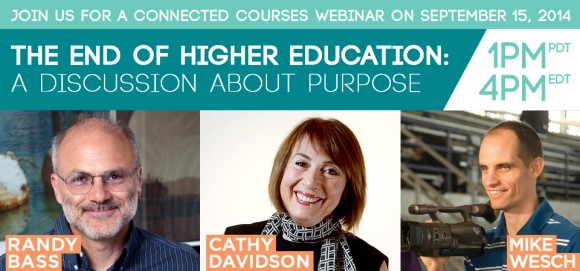
Cathy Davidson discusses Technology Distraction on NPR
Drivers tell pollsters they know it’s too dangerous to text while they’re at the wheel, but about one third admit they do it anyway. Now there’s persuasive evidence that we don’t have as much choice as we tell ourselves. Matt Richtel reports for the New York Times, where he writes about the intersection of technology, neuroscience and public policy. He’s author of a new book called A Deadly Wandering: A Tale of Tragedy and Redemption in the Age of Attention.
Matt Richtel, Technology Reporter, New York Times (@mrichtel)
David Greenfield, Center for Internet and Technology Addiction (@CITACenter)
Cathy Davidson, City University of New York (@CathyNDavidson)
Mapping the Futures of Higher Education (Spring 2015)
Professors Cathy Davidson and William KellyIDS 70200
Spring 2015, Tuesday 4-6 PM
The Graduate Center, CUNY
Departments Crosslisting IDS 70200 (to date; course numbers will come soon):
- Comparative Literature
- Critical, Social and Personality Psychology
- Earth and Environmental Sciences & Environmental Psychology
- English
- Urban Education
“Mapping the Futures of Higher Education” is the first course being offered as part of the Graduate Center and CUNY’s new Futures Initiative, designed to prepare the next generation of college professors. The class will be student-led and one aim is to experiment with a range of pedagogical forms while also engaging in thoughtful conversation about the nature, purpose, and state of higher education today. This course will be team-taught by Professor Cathy Davidson, director of the Futures Initiative, and former GC President William Kelly. The course is designed especially for second, third, or fourth year students who are teaching during S 2015 at one of CUNY’s colleges or community colleges. Our focus will be on working together to design innovative peer-to-peer pedagogies that engage students, spark creativity, span disciplines and technologies, and offer meaningful public engagement.
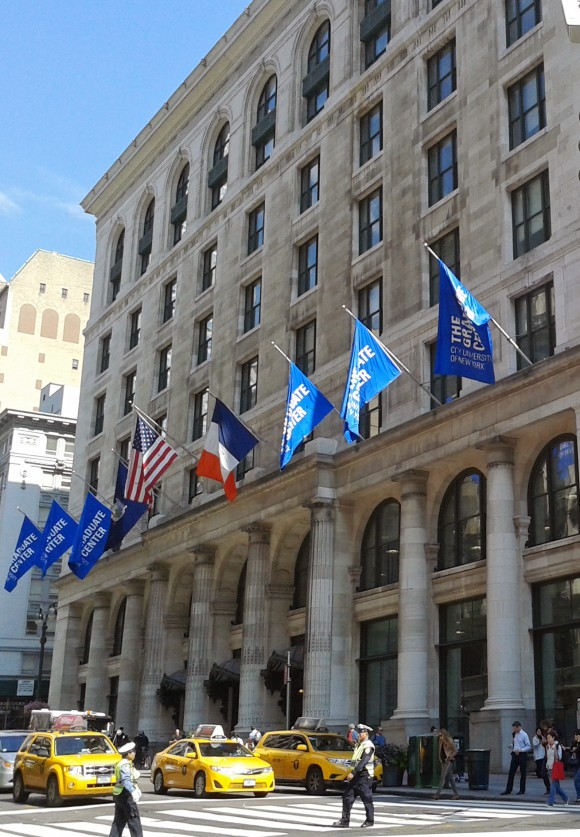



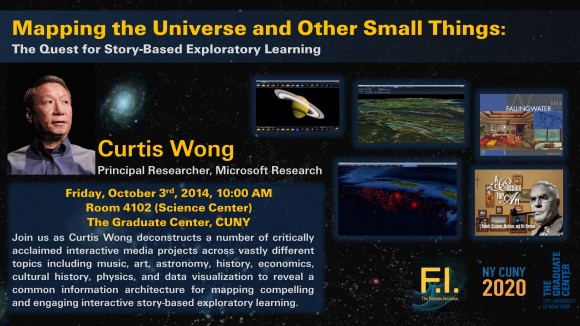
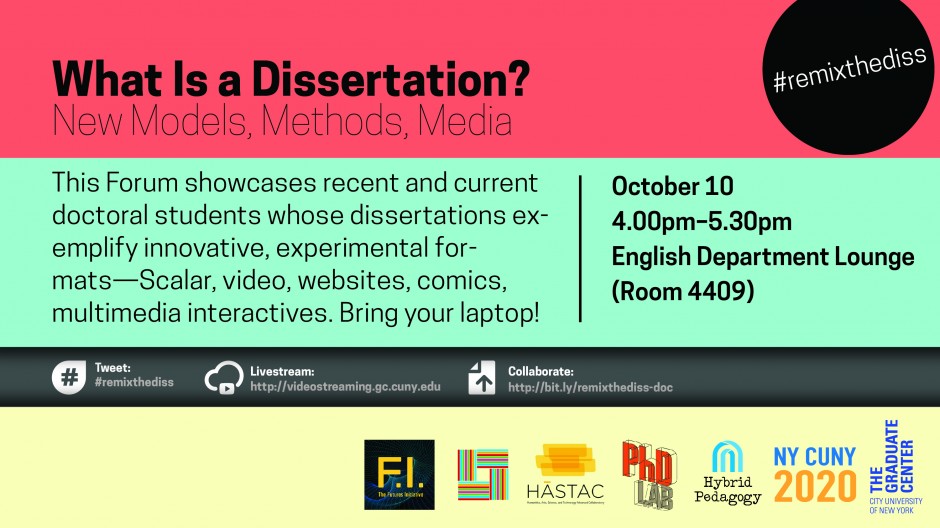


Here is the official CUNY Map of NYC. It will be fascinating to populate it with other data, other ways of visualizing education as an asset, and to see what we can do to make a stirring, vibrant, visible contribution: http://www.cuny.edu/about/colleges.html Part of our challenge is to encourage the reinvestment and greater investment in CUNY as the city’s most affordable (perhaps only affordable) asset. Now ranked as #1 in income inequality, CUNY is a bargain: you can send your kid to CUNY virtually free. CUNY professors are incredibly dedicated, hardworking, and need more support. Part of the Futures Initiative is to encourage greater support for those who are giving so much to this city.
One of our collective projects for next term is building, online, the CUNY Map of NYC, including all the students at all the colleges who will be participating by taking courses taught by the Graduate Center students in this class. In the city with the worst income inequality in the country, students in NY can get a CUNY education virtually debt free. We want to show what that produces for the city–intellectual life, job training, innovation, the arts. Our desire is to motivate more support for the system, especially for the underpaid and often adjunct teaching staff. They deserve it. In the short time I’ve been here I’ve been overwhelmed to meet such talented, hardworking, dedicated, innovative teachers!